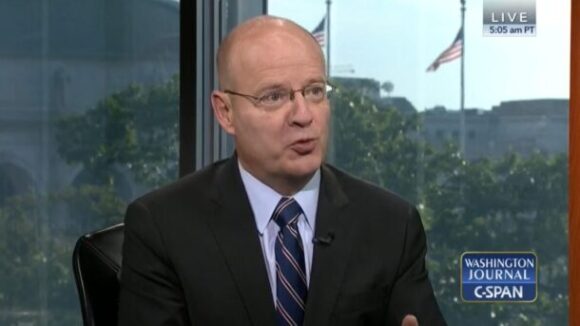Will Team Biden Weaponize Workers’ Pensions?
Big Labor abuse of worker pension and benefit funds as a means of advancing union bosses’ self-aggrandizing policy objectives is a familiar phenomenon.
Download the January 1956 National Right to Work Newsletter PDF.
Interest is Growing – – in the forthcoming Supreme Court decision in Hanson vs. Railway Employees Department (the Southern Pacific union shop case up on appeal from the Nebraska Supreme Court).
Broader Issues Involved – – among numerous newspapers which have commented, the Chicago Daily News declares: “This is an issue vital to our concept of individual liberty, and it is unfortunate that there is some doubt that it will receive the decisive consideration that it needs.
The Merger and the Right to Work – – Political implications of the AFL-CIO merger are being watched closely by all groups fighting compulsory unionism since the announced objective of the mighty new organization’s leaders is to make this principle universal throughout the nation.
Extreme interest – – is focused on the question of whether the unions leaders can control the votes of their members. Many feel that, when it comes to civil elections in which a man can vote by secret ballot, even those members who fail to oppose their leaders at the union level, because of fear of expulsion and loss of jobs, will remain independent.
Politics and the Right to Work – – The taking away of a man’s right to earn a living because he chooses not to join and pay tribute to a private organization is far more serious than just a difference of political party affiliation, and the National Right to Work Committee, in its opposition to this limitation of human rights, is non-partisan and non-political.
The Legal Picture – – Interest continues to grow in a study of the legislative restrictions on union security agreements as presented in a speech before the American Bar Association in Philadelphia last summer.
Worker to Workers – – One of the· most telling attacks on compulsion and how it works against the laboring man, has been made by W.T. Harrison, a clerk on the L. and N. Railroad at Louisville and a member of the board of the National Right to Work Committee.
Right to Work Laws and the Economy – – In 1955 the National Right to Work Committee made a survey of the effects of Right to Work laws on the 12 states that had had them in effect since 1947 – – or long enough for significant conclusions to show up in official government figures covering various economic categories.
Mississippi – – The Mississippi Agricultural and Industrial Board reports that a total of 123 new and expanded manufacturing plants have been developed in the state in the past two years. (Mississippi’s Right to Work law became effective February 24, 1954).
Louisiana – – The New Orleans Chamber of Commerce has just completed a study of the effects of that state’s Right to Work law, which became effective July 28, 1954.
Farmers Fight Compulsion – – Both the National Grange and the American Farm Bureau Federation are now on record as strongly recommending extension of Right to Work laws into other states to protect American workers’ rights to hold their jobs without being forced to belong to any private organization.

Big Labor abuse of worker pension and benefit funds as a means of advancing union bosses’ self-aggrandizing policy objectives is a familiar phenomenon.

Leaked CTU Proposals Won’t Do Anything to Improve Schools’ Poor Performance

What impact does handing a union monopoly power to deal with your employer on matters concerning your pay, benefits, and work rules have on your pay?